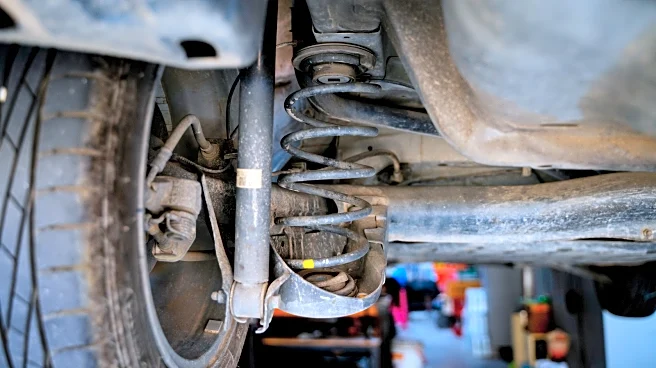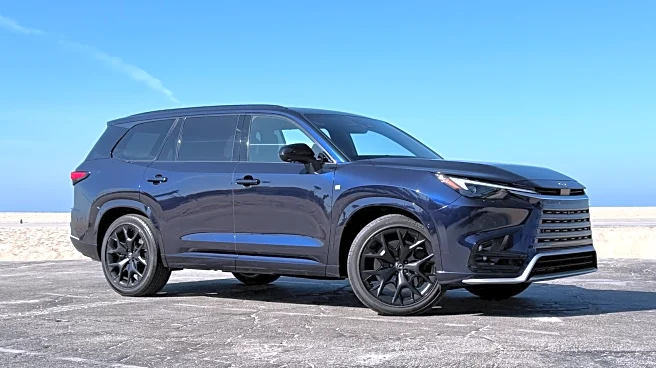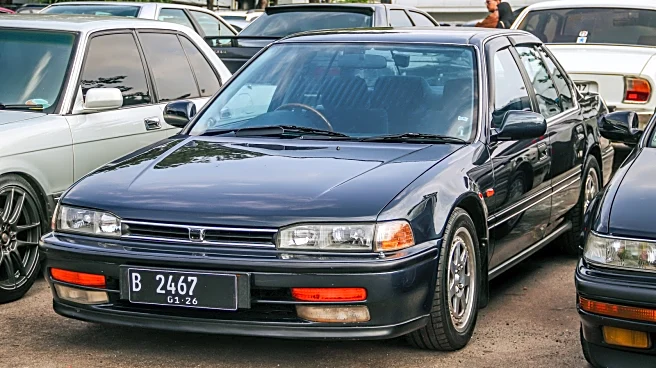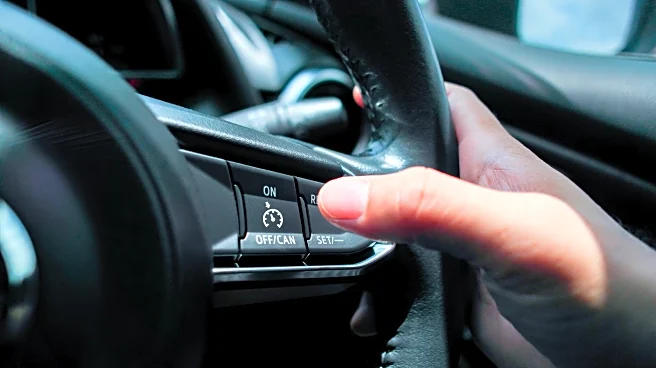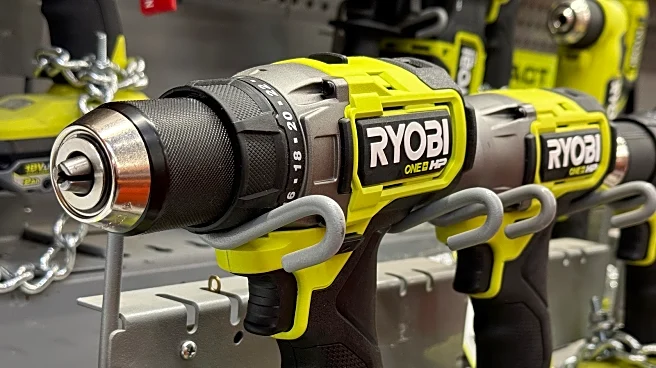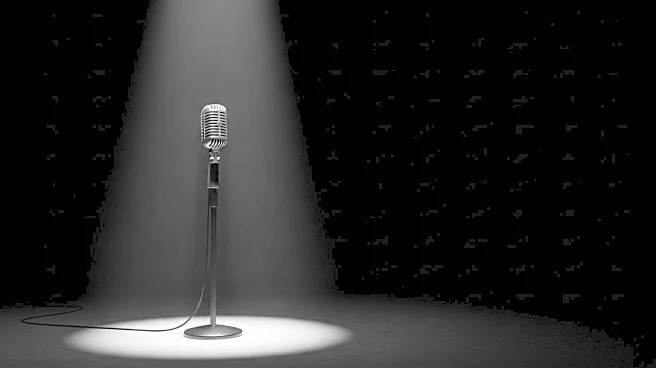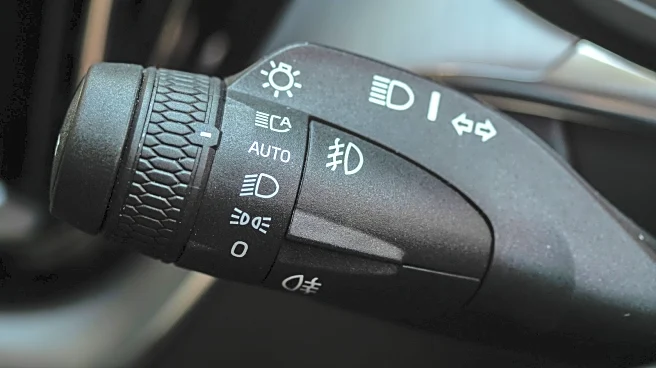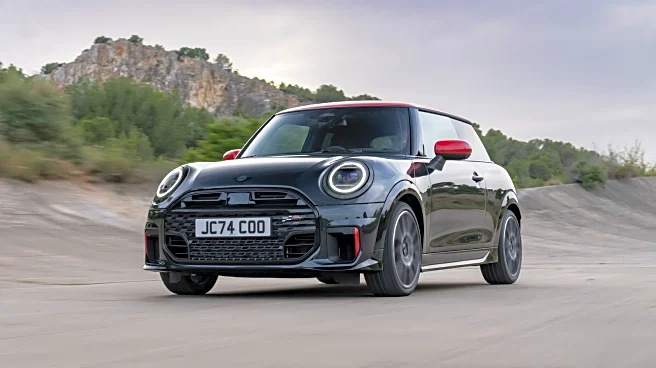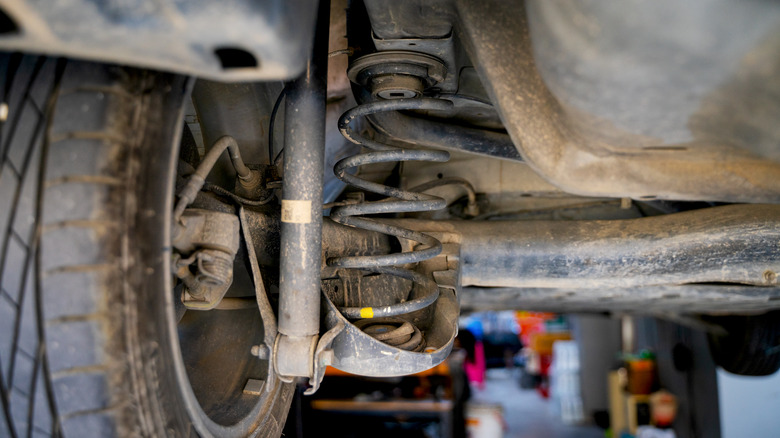
There are two main types of vehicle suspensions, dependent and independent suspensions. Solid-axle suspensions are an example of the first, while independent suspensions include double wishbone and MacPherson strut suspensions, named after Earle S. MacPherson. While both are independent suspensions, the two differ in several ways, including the types of cars they're used in.
MacPherson strut suspensions are typically more common on affordable, everyday vehicles. In contrast, a double wishbone suspension is more likely
to be found on a performance or luxury vehicle. When it comes to on-road driving performance, wishbone suspensions allow for better handling characteristics compared to MacPherson strut suspensions, which is one of the main reasons why premium models use them.
The double wishbone suspension is named so because of the way the two control arms resemble wishbones. Add two control arms, and you get a double wishbone suspension setup. These two control arms are placed in an upper and lower position with ball joints to help tie everything together.
Read more: 6 Cars With The Best AWD Systems (And 2 With The Worst)
Double Wishbone Vs. MacPherson Strut Suspensions
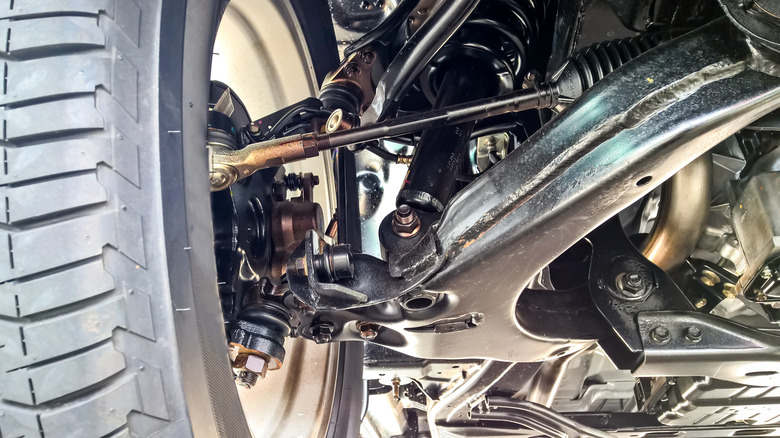
MacPherson strut suspensions are more common than double wishbone suspensions. This is mostly due to the MacPherson strut systems being much less complicated than double wishbone suspensions, as there are fewer parts. Due to that simple design, MacPherson strut suspensions are also more affordable when compared to double wishbone suspensions. Finally, MacPherson strut suspensions are relatively compact, making them ideal for mainstream vehicles that prioritize cabin and cargo room over outright performance.
While the affordability and compactness of MacPherson struts are nice, the capability of double wishbone suspensions is what sets them apart. The double wishbone design is more durable than MacPherson struts. Double wishbone suspensions also give mechanics and technicians more ways to adjust and tune the vehicle's suspension to create the handling characteristics they desire. That adjustability and the handling improvements that come from it are one of the biggest reasons why premium vehicles choose double wishbones over MacPherson struts.
Other Types Of Suspensions
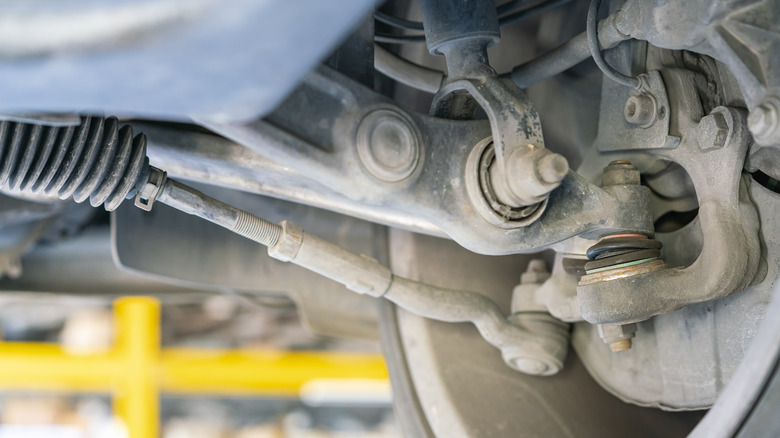
Double wishbone and MacPherson strut are just two of the numerous suspension systems that are available for vehicles. Beyond those two, there are also torsion beam systems, leaf spring suspensions, multilink systems, air suspensions such as Chevrolet's Air Ride, and live axle suspensions.
Live axle suspensions are one of the oldest and classic suspension designs, used on everything from horse-drawn carriages to off-road vehicles. However, while live axle suspensions are extremely durable and help make Jeeps incredible off-road climbers, they aren't independent. Thus, when one wheel runs over a bump or a pothole, the other wheel reacts as well.
In contrast, multilink suspensions are some of the most flexible suspension systems used in vehicles. While the term can refer to several different setups, they're typically only found on the rear wheels of rear-wheel-drive vehicles. Another big aspect of multilink suspensions is that they take up less vertical room than MacPherson strut or double wishbone suspensions, making them ideal for SUVs and crossovers that prioritize cargo space.
Want the latest in tech and auto trends? Subscribe to our free newsletter for the latest headlines, expert guides, and how-to tips, one email at a time.
Read the original article on SlashGear.
